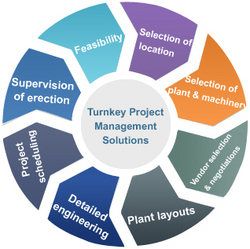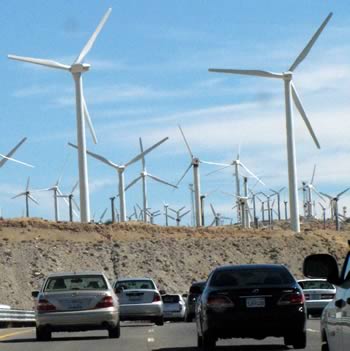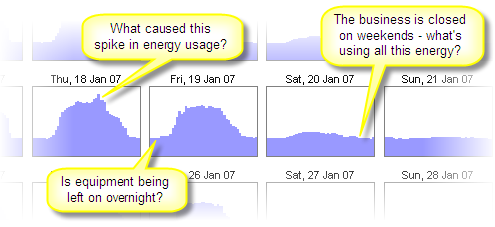- Increased system effectiveness to provide additional energy savings (typically an additional 3 to 5% above already realized savings)
- Saving goals that are followed by regular reports on performance
- Recommendations and adjustments to energy systems based on system performance
Energy Management Systems EMS
 Getting the maximum Return On Investment of your energy usage and infrastructure is vital to your competitiveness. The energy costs of running your facilities typically offset and may soon overtake your plant improvement investment costs. GPS Energy Management Systems are designed to increase your power efficiency and so drive operational and capital stewardship that is aligned with your sustainability policy implementation and the reduction of greenhouse gases.
Getting the maximum Return On Investment of your energy usage and infrastructure is vital to your competitiveness. The energy costs of running your facilities typically offset and may soon overtake your plant improvement investment costs. GPS Energy Management Systems are designed to increase your power efficiency and so drive operational and capital stewardship that is aligned with your sustainability policy implementation and the reduction of greenhouse gases.
GPS helps clients reduce energy consumption, waste and emissions as part of adopting more sustainable business practices.
We provide an integrated set of business processes, tools and capabilities to change energy-consuming behaviors, reduce energy costs, improve supply predictability and reliability and manage associated risks.
Our Approach
Our optimization services increase power efficiency, lowering the cost of your facility and infrastructure operations and management. In addition, the service provides a credible, independent assessment to support your sustainability strategy and enable you to meet regulatory compliance needs.
Our assessments are tailored to meet the needs of your individual organization and may involve any of the following:
- Facility Assessments – to clearly determine the factors which affect the energy efficiency of your operations, and to make qualified recommendations for optimizing the efficiency of your facilities and energy usage
- Measurement and Metrics – to enable ongoing management and continuous improvement, including such de-facto standards as Power Usage Effectiveness, Carbon Usage Effectiveness, and Facilities Data Maturity Model evaluation
- Energy Management Systems – to obtain the right balance between space, power and consumption. From the placement of hardware, right up to the many factors impacting energy demand
- Time Of Use Meter Simulation – to instantly predict your power consumption change based on data centers and building wide air-conditioning controls, using real, variable workloads
- Facility Energy Certification – to bring rising energy costs under control while assisting you in optimizing your energy efficiency
- On-site Inspection and Measurement – to reveal additional opportunities for optimizing energy efficiency that require minimal expense or can be implemented through changes in operational management
Energy Optimization
Take a closer look at our advanced energy auditing
For those clients wishing to make use of our energy audit services, our advanced analysis tools are designed and managed under a stringent set of environmental principles. Utilizing our facilities allows your business to significantly reduce the energy consumption and thus decrease business costs.
Green Power Guy takes monitoring services to a higher level with energy optimization services that help ensure that your building systems are functioning as efficiently as possible. Helping you achieve optimal energy savings much higher than current savings.
We work with our clients from the get-go to make savings goals, and then we follow up with a suite of reports for monitoring and analyzing equipment efficiency, usage tracking and notes on energy anomalies. We continue our service with regular consultation for improving building performance and recommendations to ensure benchmarks can be achieved. Green Power Systems include:
- Metering your energy consumption and collecting the data.
- Finding opportunities to save energy, and estimating how much energy each opportunity could save. You would typically analyze your meter data to find and quantify routine energy waste, and you might also investigate the energy savings that you could make by replacing equipment (e.g. lighting) or by upgrading your building’s insulation.
- Taking action to target the opportunities to save energy (i.e. tackling the routine waste and replacing or upgrading the inefficient equipment). Typically you’d start with the best opportunities first.
- Tracking your progress by analyzing your meter data to see how well your energy-saving efforts have worked.
- (And then back to step 2, and the cycle continues…)
To confuse matters, many people use “energy management” to refer specifically to those energy-saving efforts that focus on making better use of existing buildings and equipment. Strictly speaking, this limits things to the behavioral aspects of energy saving (i.e. encouraging people to use less energy by raising energy awareness), although the use of cheap control equipment such as timer switches is often included in the definition as well.
The above four-step process applies either way – it’s entirely up to you whether you consider energy-saving measures that involve buying new equipment or upgrading building fabric.
Controlling and reducing energy consumption at your organization

Energy management is the means to controlling and reducing your organization’s energy consumption… And controlling and reducing your organization’s energy consumption is important because it enables you to:
- Reduce costs – this is becoming increasingly important as energy costs rise.
- Reduce carbon emissions and the environmental damage that they cause – as well as the cost-related implications of carbon taxes and the like, your organization may be keen to reduce its carbon footprint to promote a green, sustainable image. Not least because promoting such an image is often good for the bottom line.
- Reduce risk – the more energy you consume, the greater the risk that energy price increases or supply shortages could seriously affect your profitability, or even make it impossible for your business/organization to continue. With energy management you can reduce this risk by reducing your demand for energy and by controlling it so as to make it more predictable.
On top of these reasons, it’s quite likely that you have some rather aggressive energy-consumption-reduction targets that you’re supposed to be meeting at some worrying point in the near future… Your understanding of effective energy management will hopefully be the secret weapon that will enable you to meet those aggressive targets…
How best to manage your energy consumption?
1. Metering your energy consumption and collecting the data
As a rule of thumb: the more data you can get, and the more detailed it is, the better.
The old school approach to energy-data collection is to manually read meters once a week or once a month. This is quite a chore, and weekly or monthly data isn’t nearly as good the data that comes easily and automatically from the modern approach…
The modern approach to energy-data collection is to fit interval-metering systems that automatically measure and record energy consumption at short, regular intervals such as every 15-minutes or half hour.
Detailed interval energy consumption data makes it possible to see patterns of energy waste that it would be impossible to see otherwise. For example, there’s simply no way that weekly or monthly meter readings can show you how much energy you’re using at different times of the day, or on different days of the week. And seeing these patterns makes it much easier to find the routine waste in your building.
2. Finding and quantifying opportunities to save energy
The detailed meter data that you are collecting will be invaluable for helping you to find and quantify energy-saving opportunities. We’ve written an article that explains more about how to analyze your meter data to find energy wast.
The easiest and most cost-effective energy-saving opportunities typically require little or no capital investment.
For example, an unbelievable number of buildings have advanced control systems that could, and should, be controlling HVAC well, but, unbeknown to the facilities-management staff, are faulty or mis-configured, and consequently committing such sins as heating or cooling an empty building every night and every weekend.
And one of the simplest ways to save a significant amount of energy is to encourage staff to switch equipment off at the end of each working day.
Looking at detailed interval energy data is the ideal way to find routine energy waste. You can check whether staff and timers are switching things off without having to patrol the building day and night, and, with a little detective work, you can usually figure out who or what is causing the energy wastage that you will inevitably find.

Detailed energy data is the key to finding the easiest energy savings. And, using your detailed interval data, it’s usually pretty easy to make reasonable estimates of how much energy is being wasted at different times. For example, if you’ve identified that a lot of energy is being wasted by equipment left on over the weekends, you can:
- Use your interval data to calculate how much energy (in kWh) is being used each weekend.
- Estimate the proportion of that energy that is being wasted (by equipment that should be switched off).
- Using the figures from a and b, calculate an estimate of the total kWh that are wasted each weekend.
Alternatively, if you have no idea of the proportion of energy that is being wasted by equipment left on unnecessarily, you could:
- Walk the building one evening to ensure that everything that should be switched off is switched off.
- Look back at the data for that evening to see how many kW were being used after you switched everything off.
- Subtract the target kW figure (ii) from the typical kW figure for weekends to estimate the potential savings in kW (power).
- Multiply the kW savings by the number of hours over the weekend to get the total potential kWh energy savings for a weekend.
Also, most buildings have open to them a variety of equipment- or building-fabric-related energy-saving opportunities, most of which require a more significant capital investment. You are probably aware of many of these, such as upgrading insulation or replacing lighting equipment, but good places to look for ideas include the Carbon Trust and Energy Star websites.
Although your detailed meter data won’t necessarily help you to find these equipment- or building-fabric-related opportunities (e.g. it won’t tell you that a more efficient type of lighting equipment exists), it will be useful for helping you to quantify the potential savings that each opportunity could bring. It’s much more reliable to base your savings estimates on real metered data than on rules of thumb alone. And it’s critically important to quantify the expected savings for any opportunity that you are considering investing a lot of time or money into – it’s the only way you can figure out how to hone in on the biggest, easiest energy savings first.
3. Targeting the opportunities to save energy
Just finding the opportunities to save energy won’t help you to save energy – you have to take action to target those energy-saving opportunities that require you to motivate the people in your building. It can be hard work, but, if you can get the people on your side, you can make some seriously big energy savings without investing anything other than time.
As for those energy-saving opportunities that require you to upgrade equipment or insulation: assuming you’ve identified them, there’s little more to be said. Just keep your fingers crossed that you make your anticipated savings, and be thankful that you don’t work for the sort of organization that won’t invest in anything with a payback period over 6 months.

4. Tracking your progress at saving energy
Once you’ve taken action to save energy, it’s important that you find out how effective your actions have been:
- Energy savings that come from behavioural changes (e.g. getting people to switch off their computers before going home) need ongoing attention to ensure that they remain effective and achieve their maximum potential.
- If you’ve invested money into new equipment, you’ll probably want to prove that you’ve achieved the energy savings you predicted.
- If you’ve corrected faulty timers or control-equipment settings, you’ll need to keep checking back to ensure that everything’s still working as it should be. Simple things like a power cut can easily cause timers to revert back to factory settings – if you’re not keeping an eye on your energy-consumption patterns you can easily miss such problems.
- If you’ve been given energy-saving targets from above, you’ll need to provide evidence that you’re meeting them, or at least making progress towards that goal…
- And occasionally you might need to prove that progress isn’t being made (e.g. if you’re at your wits’ end trying to convince the decision makers to invest some money into your energy-management drive).
Managing your energy consumption effectively is an ongoing process…
At the very least you should keep analyzing your energy data regularly to check that things aren’t getting worse. It’s pretty normal for unwatched buildings to become less efficient with time: it’s to be expected that equipment will break down or lose efficiency, and that people will forget the good habits you worked hard to encourage in the past…
So at a minimum you should take a quick look at your energy data once a week, or even just once a month, to ensure that nothing has gone horribly wrong… It’s a real shame when easy-to-fix faults such as misconfigured timers remain unnoticed for months on end, leaving a huge energy bill that could have easily been avoided.
But ideally your energy-management drive will be an ongoing effort to find new opportunities to target (step 2), to target them (step 3), and to track your progress at making ongoing energy savings (step 4). Managing your energy consumption doesn’t have to be a full-time job, but you’ll achieve much better results if you make it part of your regular routine.
